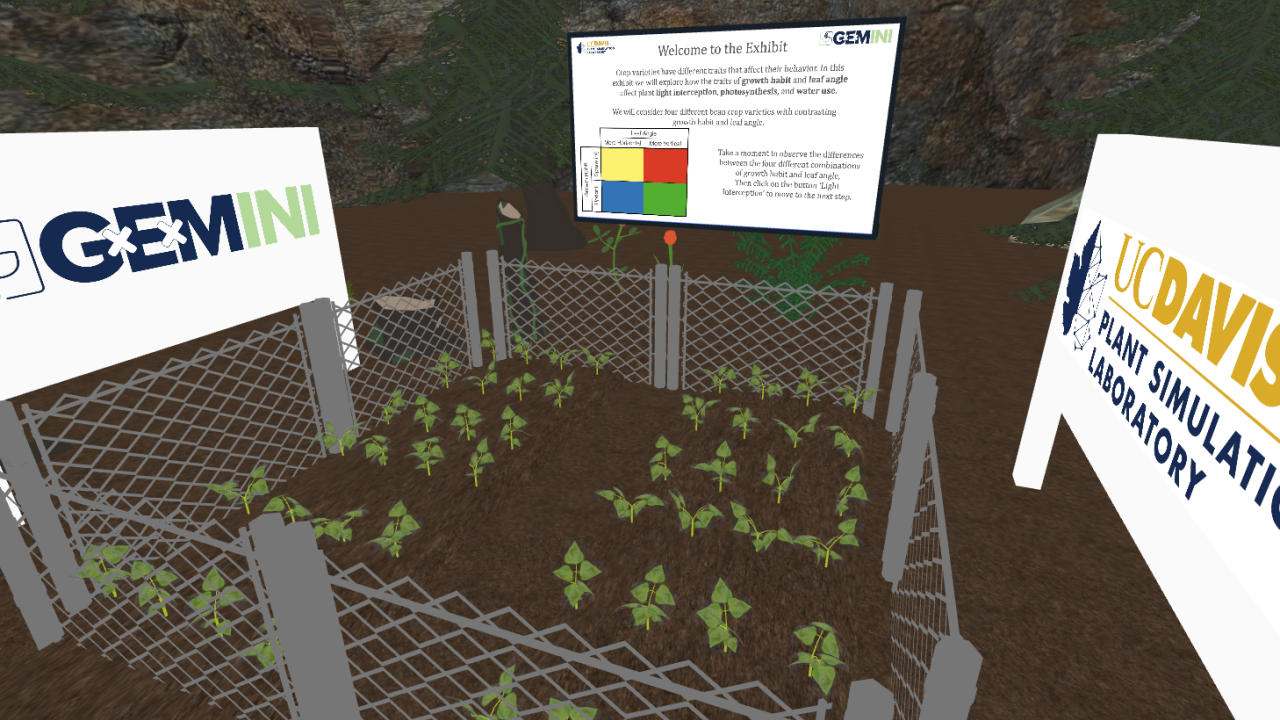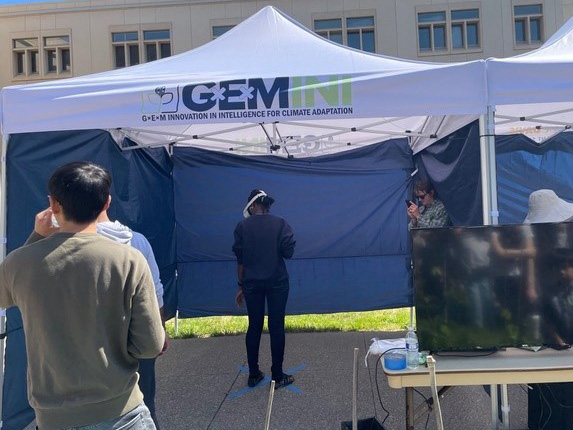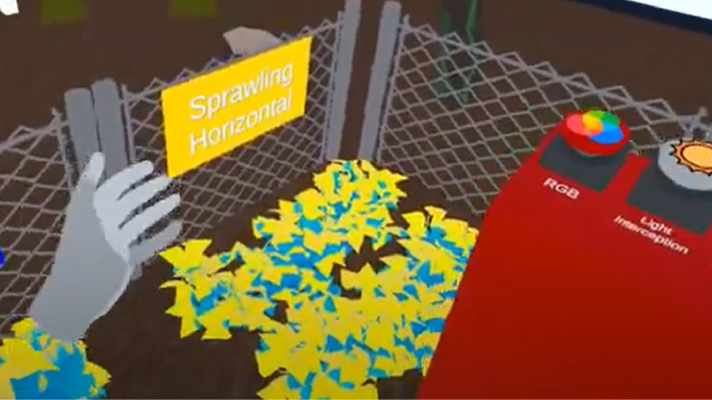
Explore crop performance in 3D virtual reality
Bailey’s lab simulates plants

How can we really know what’s going on with the plants in fields, orchards and pastures? Using massive amounts of information gathered from agricultural lands, scientists have developed models that simulate how plants absorb light, take in and release gases, use water, grow and produce food.
In Brian Bailey’s Plant Simulation Lab, researchers are working on three-dimensional plant models to show these and other processes, coupled with a virtual reality experience that lets people see how the model works. Pranav Ghate, a computer programmer in the lab, has created a VR demonstration of the modeling system, called Helios, that will be available to visitors during Picnic Day.
“The exhibit allows participants to visualize the impacts of varying crop traits and configurations on processes that determine how they perform in the field,” said Bailey, an associate professor in the UC Davis Department of Plant Sciences.
The VR experience lets people see four different bean varieties: They grow in different combinations of upright or sprawling, and leaf angle is vertical or horizontal. The question the researchers pose is, how do these differences affect things such as the plants’ ability to capture light and to photosynthesize?
“It can be difficult to understand and visualize how variation in these traits affects the crop’s performance, so we use 3D model simulations to do that,” Bailey said. “This exhibit really shows the potential for incorporating simulation models within plant sciences.”
Watch a video
Get a taste of what you’ll see at the exhibit, “Explore Crop Performance in 3D Virtual Reality,” here.
Learn more about the work of the Bailey Plant Simulation Lab here.

Media Resources
- Trina Kleist, UC Davis Department of Plant Sciences, tkleist@ucdavis.edu, (530) 754-6148 or (530) 601-6846
